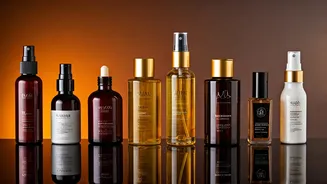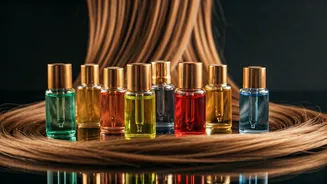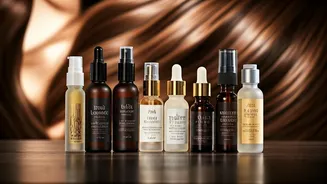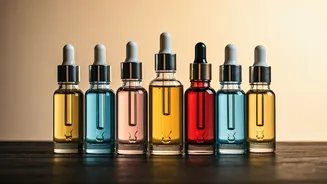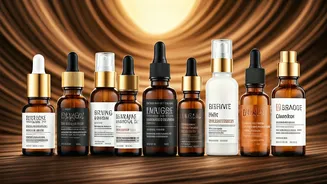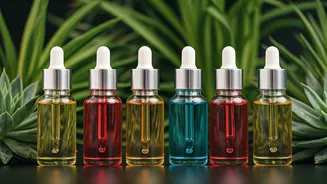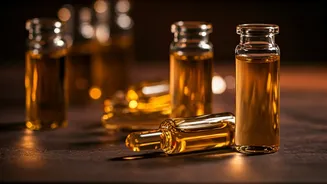Serum Selection Criteria
The process of selecting the best hair growth serums involved a thorough examination, considering multiple factors crucial for efficacy and user experience.
Firstly, the ingredients were evaluated to ensure they are backed by scientific evidence. Components like minoxidil, peptides, and various vitamins and natural extracts were prioritized for their proven effects on hair growth. Secondly, user reviews played a significant role. A serum's popularity and positive feedback from those who have used the product were considered essential indicators. Thirdly, ease of use and application method were taken into account. Products that are easy to incorporate into daily routines and are comfortable to use were favored. Finally, we looked into the formulation characteristics such as whether they are non-greasy, and if they are suitable for all hair types.
Top Serum: Overview
The top-rated hair growth serums, often boasting formulations enriched with scientifically-backed ingredients, can be used by anyone, regardless of hair type. These serums often contain ingredients like minoxidil, known for its ability to stimulate hair follicles, and peptides, which support hair structure and growth. The appeal of these products also lies in their ease of application. Designed for seamless integration into daily routines, they are often non-greasy, which makes them suitable for everyday use. Many users have reported visible improvements in hair density and reduced hair fall after consistent usage. A serum offers a convenient and effective way to address hair thinning and encourage healthier, fuller hair growth.
Serums: Key Ingredients
When choosing a hair growth serum, it’s important to understand the role of specific ingredients. Minoxidil, a common component, works to increase blood flow to the scalp, which encourages hair growth. Peptides, another important group, support the structure of hair and enhance its strength, which reduces breakage. Vitamins like biotin and vitamins A, C, and E are often included to nourish hair follicles and promote overall hair health. Additionally, some serums contain natural extracts, such as saw palmetto, which is known to help block DHT, a hormone that can cause hair loss. These ingredients, combined strategically, work together to provide a comprehensive approach to hair growth and health.
Serum Application: Tips
To maximize the effectiveness of a hair growth serum, proper application is crucial. Start by ensuring your scalp is clean. Apply the serum directly to the scalp, focusing on areas where hair thinning is noticeable. Gently massage the serum into the scalp using your fingertips for a few minutes. This process helps the serum to be absorbed and boosts circulation. It’s important to follow the product instructions, as different serums may have different application guidelines regarding the amount and frequency of use. Consistency is vital for seeing results, so incorporate the serum into your daily or weekly routine, depending on the product’s directions.
Serum Selection: Hair Type
When selecting a hair growth serum, it is important to consider your hair type. For those with oily hair, a lightweight, non-greasy serum that absorbs quickly is ideal to avoid weighing down the hair. If you have dry hair, a serum with moisturizing ingredients like argan oil or hyaluronic acid can help replenish moisture. For sensitive scalps, look for serums that are free of harsh chemicals, fragrances, and alcohol to avoid irritation. Understanding your hair type will help you select a product that not only promotes hair growth but also complements your hair's specific needs, ensuring the best possible results.
Serums: Common Mistakes
To avoid common pitfalls when using hair growth serums, be mindful of several factors. One frequent mistake is applying too much serum, which can lead to product buildup and clog hair follicles, counteracting the benefits. Failing to use the serum consistently can also hinder its effectiveness, as results typically take time and consistent application. Neglecting scalp health can also be a problem; if the scalp is unhealthy, the serum may not be as effective. Additionally, setting unrealistic expectations can lead to disappointment; hair growth is a gradual process. Finally, ignoring product instructions or not consulting a dermatologist if you have underlying scalp conditions can lead to adverse effects. Understanding and avoiding these mistakes ensures the serum works as intended.
Serum: Potential Side Effects
While hair growth serums are generally safe, users should be aware of potential side effects. Some individuals may experience scalp irritation, redness, or itching, especially with products containing minoxidil or strong active ingredients. Others might notice temporary shedding as the hair follicles adjust to the treatment, which is typically followed by new growth. In rare cases, some users may report unwanted hair growth in areas where the serum comes into contact with the skin. Always read the ingredient list carefully, and if you have sensitive skin, perform a patch test before full application. It's always best to consult a dermatologist if you experience any concerning side effects or if you have any pre-existing scalp conditions.



